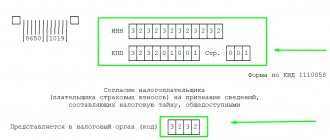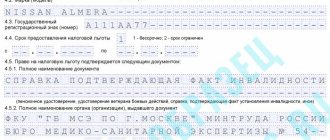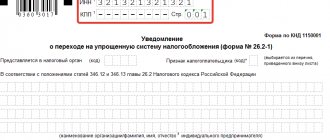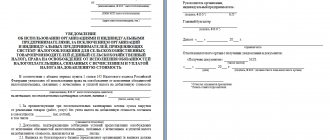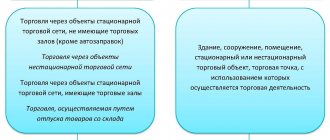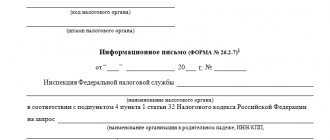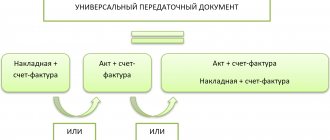Filling out the notification begins by adding a deal in the “List of deals”
and then fill out all the necessary sections in order.
"TIN" lines
and
“Checkpoint”
in each section of the notification are indicated automatically from the client’s registration card in the SBIS system.
The serial number of the page and the date the calculation was completed are reflected automatically.
- Title page
- Section 1A. Information about a controlled transaction (group of similar transactions)
- Section 1B. Information about the subject of the transaction (groups of similar transactions)
- Section 2. Information about the organization - a participant in a controlled transaction (group of similar transactions)
- Section 3. Information about an individual participant in a controlled transaction (group of similar transactions)
Data structure in the notification of controlled transactions in the form of the Federal Tax Service and in 1C
In accordance with paragraph 2 of Art.
105.16 of the Tax Code of the Russian Federation, subjects of controlled transactions (or equivalent to such) must send a notification to the Federal Tax Service reflecting information on these transactions by May 20 of the year following the reporting year. In 2021, May 20 falls on a work environment, which means there will be no postponements and you need to report on time.
Find out which transactions are considered controlled from the publication.
ATTENTION! In 2021, for 2019, the notification is submitted on a new form, as amended by the order of the Federal Tax Service of Russia dated July 26, 2019 No. ММВ-7-13/ [email protected] The changes in the new form are technical. They take into account last year’s amendments on controlled transactions (the criteria by which transactions are classified as controlled were adjusted, and fewer transactions became subject to price control).
notifications can be found at the link below.
The notification of controlled transactions approved by the Federal Tax Service consists of the following main elements:
- 2 sheets reflecting information about the taxpayer;
- sections 1A and 1B, reflecting information about the taxpayer’s controlled transactions;
- sections 2 and 3, reflecting information about counterparties with whom the taxpayer entered into legal relations.
Modern accounting programs, such as 1C, allow you to fill out a notification form for controlled transactions by entering the above types of data into special forms in the software interface. After the user has entered all the data, the software automatically transfers them to the fields corresponding to sections 1A, 1B, 2 and 3 and generates a document identical to the form developed by the Federal Tax Service. It can be printed, signed and sent to the tax office.
The notification in question can be submitted to the Federal Tax Service in electronic form, but for this, the payer must have a qualified electronic signature (or ESP) as well as appropriate software for sending a file with the ESP via the Internet.
Regardless of the method of generating a notification of controlled transactions (direct data entry into the form or through 1C), taxpayers have difficulty filling out sections 1A, 1B, 2 and 3 of the relevant document. Difficulties are associated primarily with determining a specific list of facts reflected in the notification.
Let's consider what information should be indicated in the document.
How to submit a completed form
Notification can be sent in several ways:
- The simplest and fastest: personally from hand to hand to a specialist from the local tax service.
- Send through a representative, provided that he has a current notarized power of attorney.
- It is acceptable to send the notification via Russian Post by registered mail with return receipt requested.
- If an organization has an officially registered digital signature, it can send a notification via electronic means, a method of providing notifications that has become increasingly common in recent years.
We indicate information about controlled transactions in sections 1A and 2B: nuances
Section 1A contains information on each controlled transaction concluded by the taxpayer during the reporting period (or a set of similar transactions), as well as information on the financial conditions of the relevant transactions. You need to fill out as many sheets of Section 1A as there are transactions (or sets of similar legal relations) that have been concluded.
For most information, coding elements are used. Codes for filling out sections of the notification should be found in Appendix No. 1 to the procedure for filling out the notification, approved. by order of the Federal Tax Service dated 05/07/2018 No. ММВ-7-13/ [email protected]
Section 1B records information about the subject of each of the controlled transactions reflected in section 1A. That is, information about those goods, services or work that were supplied or received by the taxpayer. Here are indicated, in particular:
- names of goods, works and services;
- dates and numbers of contracts for their supply;
- places of signing contracts (dispatching goods);
- the number of goods, works and services supplied and their contract price excluding VAT and other charges;
- total contract amount;
- the date of fulfillment of obligations under the transaction (determined on the basis of the income recognition mechanism adopted in the company’s accounting).
The total number of completed sheets in Section 1B must be equal to the number of transactions reflected in Section 1A (or groups of similar transactions).
When an interest-free loan is considered a controlled transaction, find out from the article.
Title page
At the beginning of the document is the title page. This includes information about the taxpayer:
- his details (TIN, KPP, OKATO);
- branch number of the territorial tax inspectorate;
- last name, first name and patronymic name of the company representative submitting the document;
- Contact Information;
- the year for which the reporting is prepared.
If the notification is written on behalf of an individual who is not registered as an individual entrepreneur, then there is no need to put a TIN; it is enough to enter personal data on the title page, including information from a passport or other identity document.
Filling out sections 2 and 3: what to pay attention to
If the taxpayer entered into a transaction with a counterparty in the status of a legal entity, then for this transaction he must fill out section 2 of the notification. If the contract is signed with a counterparty in the status of an individual, Section 3 of the notification must be completed. The structure of sections 2 and 3 is almost identical.
In column 015 of section 2 or 3 the same figure must be recorded as indicated in column 050 of section 1B. This is the serial number of the counterparty. The taxpayer determines it independently, for example, based on the order in which contracts are concluded.
Similarly, in column 010 of section 2 or 3, the same figure is recorded as indicated in column 010 of section 1A. It corresponds to the serial number of the transaction and is also determined by the taxpayer independently.
In general, the number of sheets in section 2 or 3 corresponds to the number of sheets in sections 1A and 1B. In practice, the number of controlled transactions and counterparties a company can have is very large, so indicating each individual transaction in a document can be an extremely labor-intensive process.
But taxpayers have the opportunity to reflect transactions of the same type in the notification - and this is a significant help for them in terms of saving time. However, the firm must have compelling reasons to group transactions into one group.
Let's study the main criteria for classifying transactions recorded in a notification as similar.
Rights and obligations of the taxpayer
The current tax legislation of the Russian Federation represents a controlled transaction as a special form of transactions in which the main subject of control is its direct cost. This form of transactions pursues the main goal of ensuring maximum control over the procedures for calculating and paying taxes when legal relations arise between interdependent persons.
During the direct conduct and participation in controlled transactions, individuals acting as taxpayers acquire certain rights and obligations.
The main responsibility of taxpayers, of course, can be called timely notification of the tax authority about previously completed controlled transactions.
Notification occurs at the place of registration of the taxpayer. Established tax regulations require that the form containing this information must be in writing.
The main list of rights of taxpayers during their participation in controlled transactions can include the following:
- timely payment of taxes and fees, the exact amounts of which are established by current tax regulations;
- the right to make advance payments of income tax, as well as transfer VAT for those time periods that end within one calendar year;
- the right to independently adjust the tax base and make the necessary additions thereto, independently calculate and pay additional taxes in the event that due to price discrepancies, the tax base has been understated. In this case, all necessary adjustments must be made simultaneously at the moment when the income tax return is submitted.
Similar transactions: what are their criteria?
Ideally, the Federal Tax Service is required to provide notifications of controlled transactions, reflecting all business transactions in as much detail as possible (letter of the Federal Tax Service of the Russian Federation dated August 30, 2012 No. OA-4-13/14433). But in practice, this wish of the tax authorities is obviously difficult to implement: the number of unique business transactions per legal entity, especially if it is a large business, can amount to tens of thousands.
Therefore, it makes sense for firms to take advantage of the opportunity to combine transactions of the same type into groups based on their similarity in type of goods, as well as comparability in financial conditions (clause 5 of Article 105.7 of the Tax Code of the Russian Federation). But the criteria for classifying transactions as similar, given in the Tax Code of the Russian Federation, are quite superficial, and their interpretation in the taxpayer’s version may not coincide with the approach of the Federal Tax Service (formed at the level of official instructions and understanding of the essence of transactions by a specific inspector).
What criteria should be considered objective?
The Ministry of Finance of the Russian Federation, in letter No. 03-01-18/33520 dated August 16, 2013, recommends merging transactions if they are similar in terms of profitability indicators, determined in accordance with the provisions of Art. 105.8 Tax Code of the Russian Federation. For example, the sale of vegetables and fruits has approximately the same profitability, regardless of the specific type of product sold.
The Office allows the following not to be indicated in the notification about a group of transactions:
- prices per unit of goods or services,
- number of goods and services supplied,
- the place where the transaction was concluded or the goods were sent.
But the form, as the Ministry of Finance notes, must record the names of groups of similar transactions, the amount of income received from them, as well as the pricing method.
Please note that the structure of the notification form does not allow grouping transactions for the supply of similar or even identical goods secured by different contracts with the same supplier. The fact is that in columns 060 and 065 of section 1B, in any case, the date and number of the specific agreement are indicated.
Thus, taking into account the position of the Ministry of Finance, similar transactions can be grouped if they:
- reflect supplies of goods with the same profitability;
- delivered under one contract.
Penalties for notification
For inaccurate information in the notification or late submission of the report, the fine will be 5,000 rubles
.
Errors on the form will only attract a penalty if they prevent the identification of a controlled transaction.
If you submit an updated notification before the tax authorities discover errors, liability can be avoided. We recommend (documents are available in the commercial version of ConsultantPlus) :
- Typical situation:
- Ready solution:
Results
All firms that are subjects of controlled transactions must send notifications of controlled transactions to the Federal Tax Service by May 20 of the year following the reporting year. This source reflects data on the relevant transactions, as well as information about the counterparties of the company involved in them.
Sources:
- Tax Code of the Russian Federation
- Order of the Federal Tax Service of Russia dated July 26, 2019 N ММВ-7-13/ [email protected]
You can find more complete information on the topic in ConsultantPlus. Free trial access to the system for 2 days.
Section 1B
Here the number of filled blocks is directly dependent on the previous section. This is due to the fact that it is additional, and information is entered here about work performed or services provided, supplies of inventory, shipments, loadings, etc.
This part of the document states:
- reference to the agreement during the execution of which this or that transaction was completed (number and date of conclusion);
- place of transaction;
- number of goods;
- price per unit;
- the full cost of the controlled transaction.
At the same time, goods passing through one controlled transaction cannot be added to each other; they must be indicated separately.
